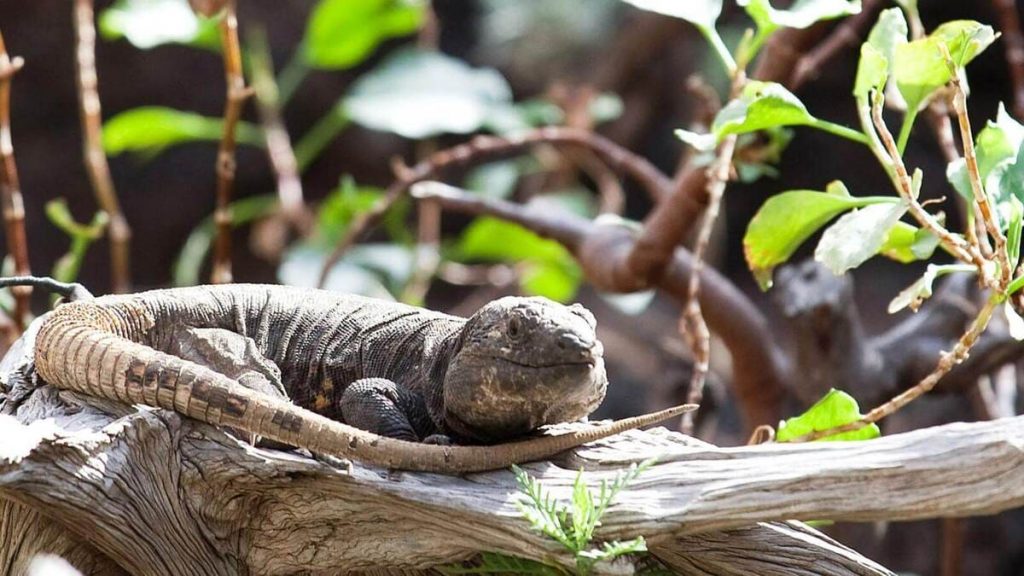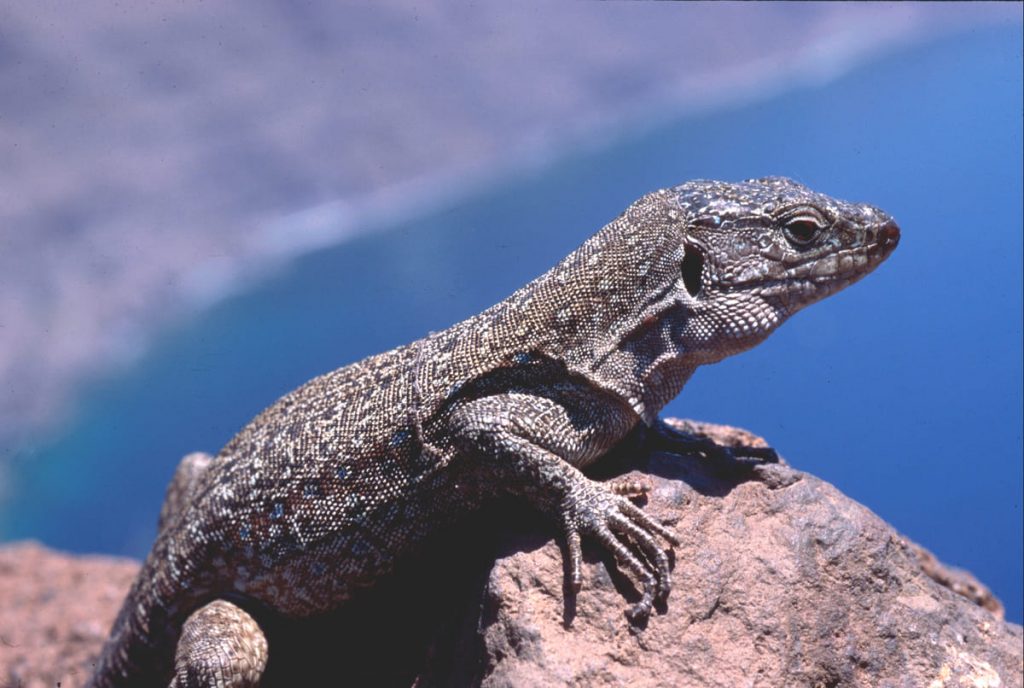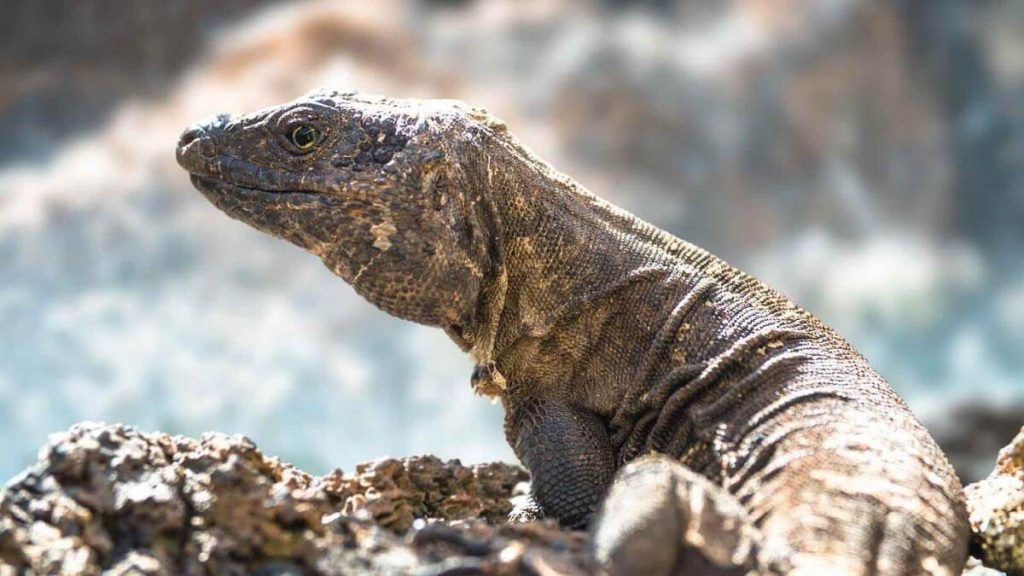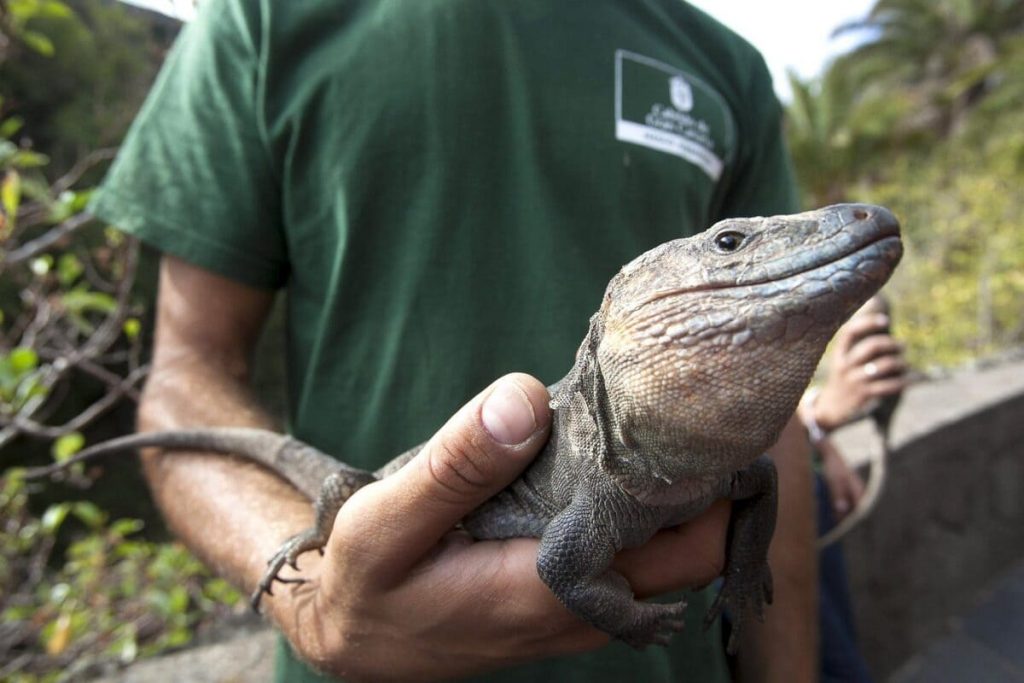The giant lizard of El Hierro is one of the four species of giant lizard found in the Canary Islands. Large in size, it is endemic to the island of El Hierro and is considered a symbol of the island. It is also critically endangered.
Characteristics of the giant lizard of El Hierro
Species in the Canary Islands and description
In the Canary Islands there are four species of giant lizards, all of them very similar, the Gomera (Gallotia bravoana), Tenerife (Gallotia intermedia), Gran Canaria (Gallotia stehlini) and El Hierro (Gallotia Simonyi). The giant lizard of El Hierro is a strong, large lizard, between 60 cm and 70 cm long, but can reach up to one meter. It has a wide head and a long tail.

Its predominant color is dark brown, grayish, or even black, with the sides decorated by lines of yellow spots (ocelli). The belly is lighter. The yellow spots are more conspicuous in males, which also have a larger head than females. Hatchlings are lighter in color and have abundant yellowish ocelli on both sides of the body. The skin darkens as they mature. In summer, molting takes place. It is an active species most of the day throughout the year if the weather is mild. They spend 90% of their time in the sun, usually on rocks. It is slow-growing and can live up to 20 years.
Habitat and diet of the El Hierro giant lizard
It is an endemic species of the island of El Hierro that only inhabits the island and the Roque Chico del Salmor. The altitude at which it lives in the Fuga de Gorreta, located in the Risco de Tibataje, is between 80 and 500 meters, with a typical vegetation of xerophytic scrub or semi-desert and the soil is stony and arid.

The subspecies Gallotia simonyi simonyi used to live on Roque Chico del Salmor, but nowadays there are no specimens left. This is a small islet in the north of El Hierro of 37 meters altitude with little vegetation. This subspecies of the Roque Chico de El Salmor became extinct in the 1930s because both scientific collectors and animal traffickers were taking them away and it was believed that the species had become extinct. In the 1970s, a population of the giant lizard, Gallotia simonyi, was found on the island of El Hierro.
In ancient times, the giant lizard of El Hierro was distributed over most of the island in areas below 700 meters of altitude. Today, the largest reserve of this species is found in the Risco de Tibataje. Since 1999, reintroductions have been attempted in Roque Chico de Salmor, where they have adapted successfully, and in El Julan and La Dehesa, where, on the other hand, they have not become habituated. The reintroduction can be carried out thanks to the specimens bred in captivity in the breeding center known as Lagartario de Guinea, also located in El Hierro.

The giant lizard of El Hierro is omnivorous. It feeds mainly on plants and complementarily on arthropods and small vertebrates (insects, especially ants, and less frequently rodents, reptiles and birds). In addition, through its sense of smell it can differentiate various types of plants and prey.
Reproduction of this species
Known data on the reproduction of this species have been obtained from captive behavior. The breeding period begins in the first half of May. Males have brighter ocelli and both males and females are more aggressive.

During courtship the male inflates his throat, shakes his head up and down and before copulation bites the female's neck. Normally, they lay once a year, between June and early August, but some females lay a second time in mid to late August. The number of eggs varies according to the size of the female, but can range from 4 to 14 eggs. Incubation duration is approximately 61 days, with hatching occurring between August and October.
El Hierro Giant Lizard Recovery Center
The Recovery Center is located inside the Ecomuseum of Guinea, in Frontera. With your visit, you can learn more about the work that is done to ensure their survival. They are conducted with the help of guides, every day of the year between 10:00 and 18:00 hours.
The giant lizard of El Hierro impresses at short distances. In this center, their breeding is carried out in a controlled manner and then the specimens are released into the wild, always within their environment. The guides that accompany the visit offer information on everything there is to know about them.

There are many wonderful villages in Lanzarote that you should not miss on your visit, but these 3 you must visit them yes or yes. The Canary Islands is a land with a thousand things to see, explore and know. If you are interested in knowing more interesting facts about the Canary Islands, here is the link to the section Explora Canarias of Marca Canaria.
Paula
Photos: efeverde.com, holaislascanarias.com,



